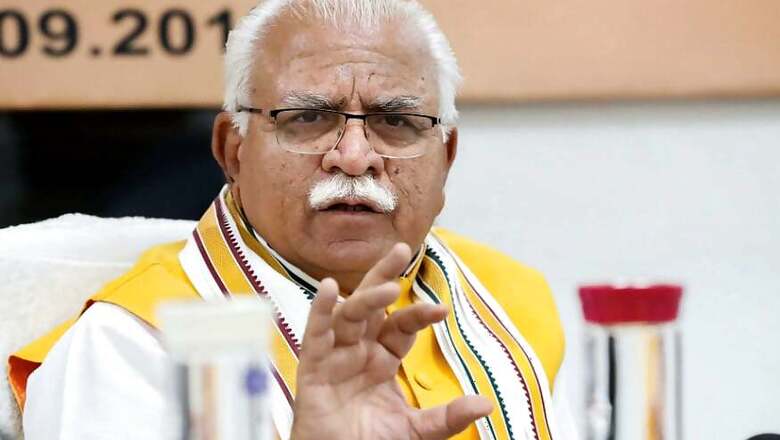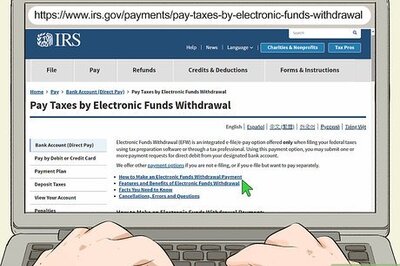
views
Haryana suffered a revenue loss of nearly Rs 10,000 crore to Rs 12,000 crore in last two months during the COVID-19 lockdown, but the things are moving back to normal after staggered resumption of economic activities, Chief Minister Manohar Lal Khattar said on Wednesday.
Asked what was the revenue loss suffered by the state in the two months of lockdown, Khattar said, "It was anywhere between Rs 10,000 crore to Rs 12,000 crore."
Khattar was replying to reporters' questions at a press conference here this evening.
He was also asked how much has the state's economy improved after opening of industries, liquor vends etc.
"We are now in a position to meet our committed expenses -- salaries, pensions, repayment of old debt and its interest and power subsidy," he replied.
"We are getting Rs 300-350 crore monthly as excise and stamp duty, besides a little bit as GST and some grants from the Centre. I can say we have reached break-even level," he said.
He, however, said for development works and implementing various schemes, the state has to depend on loans.
In April, Khattar had expressed apprehension of revenue loss during the lockdown.
"Kosh Muloo Dand", he had said, citing the crucial economic mantra occurring in Kautiliyan Arthshastra, which implies "the treasury is the backbone of administration", as he had pointed to the revenue losses that the state has been facing due to the lockdown.
The chief minister had said in April that against Rs 6,200 crore monthly revenue income from various sources, a maximum of Rs 1,600 crore is expected due to the coronavirus-led lockdown.
Nearly Rs 1,850 crore goes towards meeting salaries of government employees, Rs 750 crore towards pensions, Rs 650 crore towards social security pension that includes the money for the old, widows and physically challenged persons.
An amount of Rs 1,700 crore goes towards servicing debts which the state has borrowed.
In view of the current situation, the BJP-JJP government in the state has also announced special financial aides to help the poor and people in low income groups like daily wagers, labourers, street vendors and construction workers who have been adversely hit due to the lockdown.















Comments
0 comment